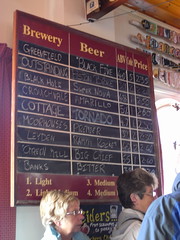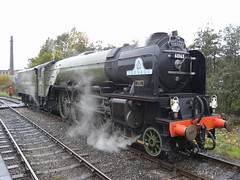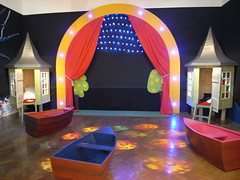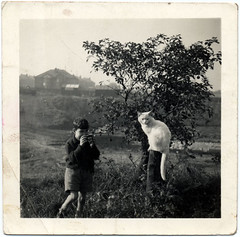It's that photo again! It was such a find amongst my Dad's old things and proves I was into photography at a young age. Not sure if that Kodak Brownie 127 was really mine, though. Cameras have always been a big part of my life, though I've never been geeky about them - just wanted them to do the job. The first real camera I owned was a metal Boots camera, that looked like a camera ought to, though it had few controls. It must have taken 127 film, though it looked like a 35mm one. I used to take it with me trainspotting and I'd love to see those negatives now, but alas they have gone.
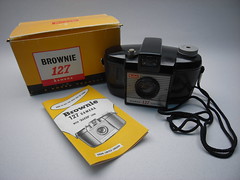
When I went to college in 1965 I bought an
Exa IIb 35mm camera and a separate light meter. I think I was copying my friend Jorj Malinowski, who had a more up-market Exakta. It was a single-lens reflex made in Dresden, with an instant-return mirror and served me well for many years. It had a Tessar 50mm f2.8 lens. I used to develop and print my own photos, but the fashion then was for high-contrast (blame David Bailey), so most of my negs are pretty useless now. I also had movie cameras: first a Bell and Howell Standard 8mm with zoom lens, later a Standard 8 Russian Quarz camera with loads of accessories, that looked more like a Bolex.
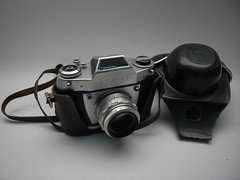
In the mid-1970s, when I was better off, I bought a
Pentax MX, mainly because it was so compact, with a stubby 40mm f2.8 lens. It had been a toss-up between this and an
Olympus OM-1, but I prefered the Pentax's traffic-light metering (just set the speed and twiddle the aperture until it shows green for go) over the Olympus's needle meter. It was totally manual; the battery only controlled the light meter. I also bought a 135mm lens for portrait work.

Around this time I bought a whole load of darkroom equipment and a
Yashica-Mat 120 camera from a friend at work, whose dad was selling up. I think I paid £25 for it. I didn't take many 2 1/4 x 2 1/4 photos with it as you only got 12 per film, but what I did take were of superb quality.
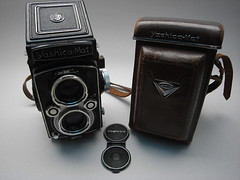
I was introduced to the
Lomo LC-A in 1998 by Simon Williams, who I was working with at Time Team. In those days you had to buy them off the Lomo Ambassador in London and needed a personal recommendation! You also had to make a pledge to carry them about with you at all times! It's a 35mm camera with a plastic lens that somehow makes everything you snap more garish, especially at night using automatic exposure.
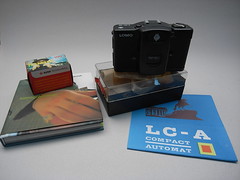
My Pentax and accessories - flash unit, other lens - was too much to cart around everywhere, so in 1998, I bought a Canon Ixus APS camera. These were tiny - the film was smaller than 35mm and came in an automatically loading cassette. One feature was that you could set it to take panoramic views, tho I soon twigged that all it did was crop the regular shape. This got stolen in 2005 from my cycle bag and I replaced it with a similar model bought off eBay for £10! But I never ever used it - when I saw the price of film I decided to go... digital!
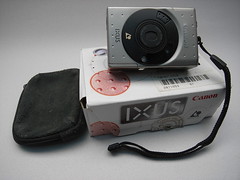
More to follow...
